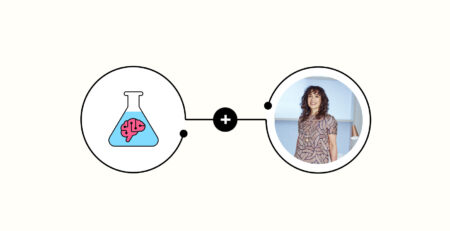Maximizing TV ad campaigns with a test and learn mindset
TV advertising has a clear purpose: to drive brand awareness and recognition so that viewers choose one brand over another. But viewing habits are constantly changing, particularly with the rise of digital (not to mention streaming platforms). More viewers than ever are prepared to pay a monthly fee to access content without ads. Spotify alone experiences an average YoY increase of 30% for paid subscribers, while data predicts that Netflix will have a massive 300 million subscribers worldwide by 2028.
With this in mind, should businesses even bother advertising on TV anymore, or should this budget be reallocated elsewhere?
You’ll be happy to hear that, despite these changing habits, TV is still a valuable advertising tool. Considering that 26.7 million households in the UK have at least one TV, there’s a huge scope to reach broad audiences, build brand trust, and drive front-of-mind awareness among viewers.
Meaning, there are still plenty of opportunities to harness this space and deliver high-quality adverts to relevant audiences. That said, developing the most successful TV ad is no small feat. Serving ads to the right consumers on the right channels is key to capturing their interest and priming them to convert, rather than merely disrupting their viewing experience. So how can businesses best hone in on these details and leverage TV advertising for maximum impact? They need to integrate a test and learn mindset into every aspect of their TV campaign.
Why test TV ads?
TV is the most expensive form of advertising, and effective ads need more than a great concept. It’s all very well spending a huge sum investing in a high budget ad, but without a scientific testing roadmap, businesses have no idea how their target audience will respond, or if the ad will even reach them. By testing different iterations of an ad before rolling it out at scale, you can ensure creative output has the desired effect. Testing also provides an invaluable opportunity to optimise your marketing mix and discover which practical elements work best with the ad, such as programme, channel, and time of day.
Additionally, testing offers a vital opportunity to trial your business infrastructure on a smaller scale before rolling out your ads to your wider audience. With a successful TV ad, there’s potential to drive dramatic growth over a short period of time. In order to sufficiently prepare for this, it’s vital to ensure your business is in a position to handle the influx of site traffic and conversions.
How do you evaluate a TV advertisement?
The first step is to clearly define your strategy and campaign goals. From there, you can then experiment by testing different elements such as channel placement, time of day, and programme to see whether or not the ad resonates with your target audience.
What kind of TV ad tests are most impactful?
Audience feedback
There are two primary methods for attaining audience feedback:
- Online polls: These are quick and easy to complete, so they tend to have high interaction rates among participants. However, they don’t leave space for suggested improvements or options to gain deeper insight into nuanced opinions of your ad.
- Interviews: Interviews are far more comprehensive than polls, but they do require participants to dedicate more time and effort. Interviews can be carried out by showing viewers different programmes with various integrated TV ads, defined by what you’re testing. From these results, you often gain valuable feedback, such as brand or product recall, the likelihood of conversion, the clarity of your core message and call to action, and positive brand associations.
Geo-testing
Using audience segments in Google Analytics, you can set up separate geographic locations to test your campaign: a control region where the ad isn’t running, and a test region where the ad is. You can then analyze and compare digital data, such as direct site uplift, organic and paid search increase, and conversions to determine the impact driven by your ad.
Testing your attribution model
Once again, Google Analytics is a great resource for testing your TV ad. Using GA, you can view different data points depending on your campaign goal. This provides more detail than available through GA’s automated attribution model alone. Comparing campaign performance between several different attribution models will allow you to get a better insight into your audience’s behaviour. For example, weighting direct navigation – such as organic search – more heavily will give you a better indication of how much influence your TV ads have had on the rest of your marketing mix.
Testing TV ads: Key takeaways
Regardless of how sophisticated your TV advert is or how comprehensive your testing plan is, there are key foundations that all businesses need to focus on to successfully implement a TV campaign:
- Don’t work in silos! Your target audience won’t visit any channel in a vacuum, so you need to assess performance across your entire marketing activity, rather than looking at each channel individually. Test retargeting with another channel in your marketing mix to find the most effective full-funnel approach for your customers.
- Before launching an expensive TV campaign, ensure all related aspects of your business are optimised, including your website, app, and product. Make sure you’re logistically prepared to handle an increase in demand and that your server can handle increased visitors, otherwise your valuable customers will go elsewhere.
Whatever your current advertising plans, make testing an integral part and be prepared to react quickly to the results. The best campaigns are memorable and resonate with their intended target audience – testing offers you a key opportunity to make sure it’s remembered for the right reasons and connect with these viewers in the best way possible.



